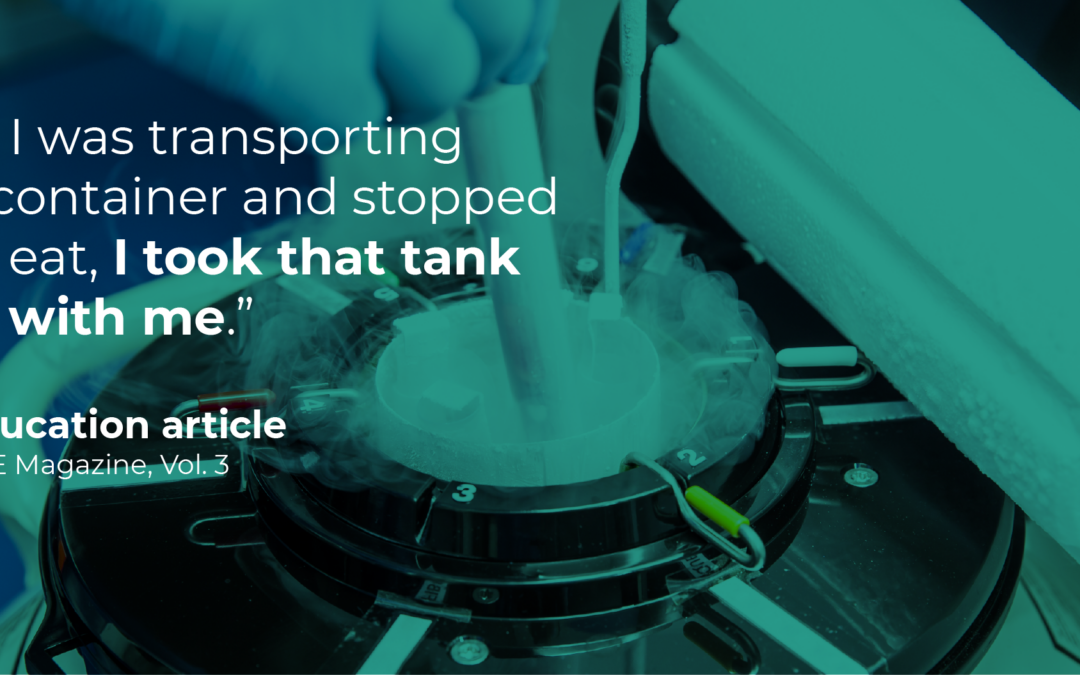Featured in the RNE Magazine, 2021 Volume 3
By: Jon Franke
When you go through in vitro fertilization (IVF), you think about everything in great detail. The best route to your fertility practice. The vitamins you’re taking. How much water you’re drinking. Whether you’re wearing your lucky socks on the right days.
Now, think about adding a move or a switch in providers into the equation. How do you deal with that extra layer of anxiety? How do you trust that the people involved will treat your eggs, embryos, and sperm with the care required?
You may already have some sort of relationship with your fertility lab director, or at least you know that since they’ve chosen this field, they’re (almost) as protective about your reproductive material as you are.
But, for many people going through the journey towards having children, shipping the genetic material that you’ve gone through so much agony to produce is something of a black box. What’s the process for shipping reproductive material, and how do you know it will arrive safely?
In this article we’ll look at the important, complex process of getting your genetic materials from point a to point b.

